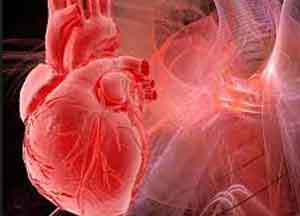- Home
- Editorial
- News
- Practice Guidelines
- Anesthesiology Guidelines
- Cancer Guidelines
- Cardiac Sciences Guidelines
- Critical Care Guidelines
- Dentistry Guidelines
- Dermatology Guidelines
- Diabetes and Endo Guidelines
- Diagnostics Guidelines
- ENT Guidelines
- Featured Practice Guidelines
- Gastroenterology Guidelines
- Geriatrics Guidelines
- Medicine Guidelines
- Nephrology Guidelines
- Neurosciences Guidelines
- Obs and Gynae Guidelines
- Ophthalmology Guidelines
- Orthopaedics Guidelines
- Paediatrics Guidelines
- Psychiatry Guidelines
- Pulmonology Guidelines
- Radiology Guidelines
- Surgery Guidelines
- Urology Guidelines
Timely intervention key to fulminant myocarditis: AHA

DALLAS —Fulminant myocarditis is usually caused by a viral infection. Its onset is often sudden and severe resulting in an exceptionally high risk of death caused by cardiogenic shock, fatal arrhythmias and multiorgan failure. A new scientific statement from the American Heart Association details the resources needed to diagnose and treat fulminant myocarditis successfully.
The resources needed to treat fulminant myocarditis – severe, inflammation of the heart that develops rapidly – are outlined in the new Scientific Statement (Statement) from the American Heart Association on how best to reduce fatalities from this rare condition. The Statement is published today in the Association’s premier cardiovascular journal Circulation.
With many of today’s technology advances, numerous devices can fully support a patient’s circulation and oxygenation/ventilation when necessary. The early recognition of fulminant myocarditis, institution of circulatory support and maintenance of end-organ function (especially avoiding prolonged neurologic hypoxemia) can result in favorable outcomes for this previously almost universally fatal condition.
The new Statement details increasing awareness and education of fulminant myocarditis among health care providers to speed evaluation, diagnosis, and treatment. Treatment options for optimal outcomes include supporting patients through the use of extracorporeal life support (heart-lung machine), percutaneous and durable ventricular assist devices (devices to help the heart pump) and heart transplantation.
“It is fortunate that fulminant myocarditis is rare and that it usually presents in typically younger and healthier patients, rather than critically ill patients seen in the office or emergency department,” said Leslie T. Cooper, M.D., FAHA, vice-chair of the Statement Writing Group. “This is where there are the greatest opportunities: early diagnosis, rapid treatment and the ability of frontline clinicians to detect the subtle signs and symptoms of this serious condition.”
The Statement has been endorsed by the Heart Failure Society of America and the Myocarditis Foundation.

Disclaimer: This site is primarily intended for healthcare professionals. Any content/information on this website does not replace the advice of medical and/or health professionals and should not be construed as medical/diagnostic advice/endorsement or prescription. Use of this site is subject to our terms of use, privacy policy, advertisement policy. © 2020 Minerva Medical Treatment Pvt Ltd